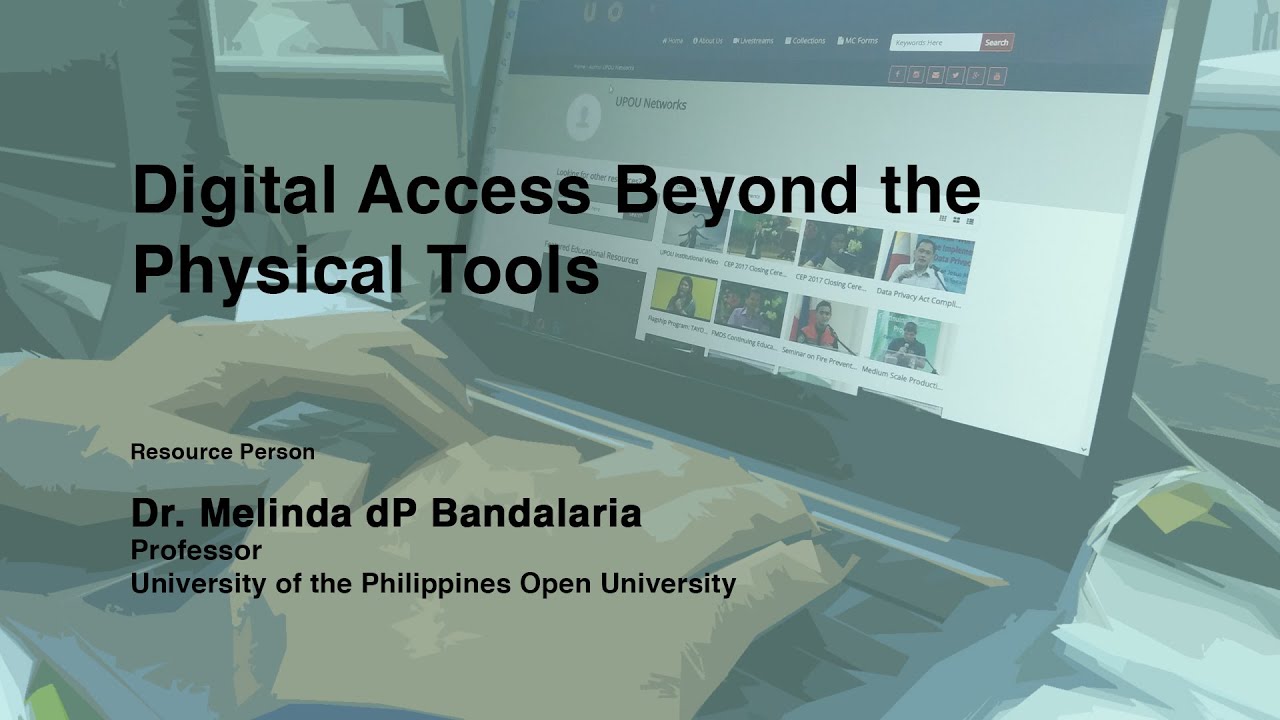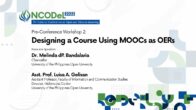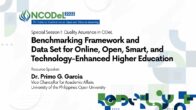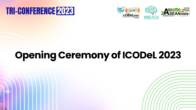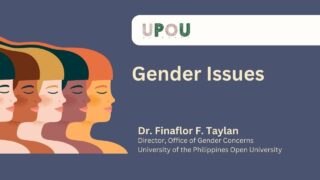Digital Access: Beyond the Physical Tools
Dr. Melinda dP Bandalaria
Good day everyone. I will be discussing the digital citizenship element “Digital access”, which I consider to be Beyond the Physical Tools.
To many of us, accessing the internet and digital content is as simple and easy as opening our television set when we wake up in the morning or anytime of the day. It is simply there, available when we want it, where we want it, and simply on our fingertips.
Unfortunately, not many are as lucky as we are. If we are to look at the statistics of internet penetration in Southeast Asia, there are still four countries, Cambodia, Lao PDR, Myanmar, and Timor Leste wherein more than half of the population don’t have access to the Internet and to the digital content. While the rest of the countries could already boast of more than 50% of the population having access to the internet, still the fact remains the same: a significant segment of the population are still digitally excluded.
Digital access is one of the nine elements of global digital citizenship. Digital access pertains to full electronic participation of the society. And technology users, like you and me, should be aware of the fact that not everyone has the same access to technology as reflected in the statistics that I have just shown. Working towards equal digital rights and helping provide and expand access to technology should be the goal of all digital citizens.
However, in order for us to perform this expectation as digital citizens, we need to understand what hinder or prevent others to access the internet and the digital content?
Digital access is beyond the physical tools – meaning it’s beyond the access to computers or the internet, although these are two major or primary aspects that define access.
Access to physical tools or hardware, like computers or mobile phones, can be a function of several things, which can include among others their availability to the users where and when they need them, the knowledge and skills needed to access or use these tools and the associated software, and of course, navigate the internet.
The cost to use the tools and access the digital content is one other component of access. In the Philippines, for instance, an hour of accessing the digital content in an internet cafe can cost the user something like P15 or P0.29 US dollars.
Beyond these, access can also be defined in the context of other essential things like getting hold of a digital content relevant to the user; the cost of the digital content itself like paying for the publication or the royalty to use part of the material, etc., and using the digital content productively. In many countries in Southeast Asia, language of the digital content has been identified as one barrier to access as most content are in the English Language.
As digital citizens working towards universal digital access, there are some strategies which we can employ.
First is anchoring the initiative to Open Education Practice or OEP. With the increased engagements in open education practice by academic institutions and increasing number of educational resources or OERs developed by other digital citizens who are advocating for open learning that can now be accessed in the World Wide Web, translation of relevant OERs into the local languages or even contextualizing them to local culture and dynamics and sharing them alike is a very important move to eliminating the barrier of cost of digital content.
Another strategy is tapping the Corporate Social Responsibility or CSR of companies and organizations like telecommunications companies or the university social responsibility of academic institutions or even government institutions so that training on digital literacy can be done especially for the marginalized sectors of the society. In the Philippines for instance, there is the government-academe-industry partnership or collaboration which aimed at providing digital literacy training for grassroots women, out-of-school youth, elder persons, even prisoners, to equip them with the necessary knowledge and skills to access digital content. One example of this is the collaboration among the University of the Philippines Open University, the Philippine Long Distance Telephone company, which is the leading telecommunications company in the Philippines, and the Department of Information and Communications Technology to implement the Infoteach Project, a digital literacy training program. Under this project, the academe develops the training curriculum and train the trainers; the private company provides the needed financial resources; and government provides the facilities, called community e-centers, which can serve as the venue for internet access for free to the members of the community. This initiative made possible the reduction if not total removal of two other barriers to accessing digital content: the skills needed to access and cost associated with the use of the hardware and the Internet.
One other aspect to ensure universal digital access is to consider the needs of the physically challenged individuals which may mean making digital content available in various formats. An example of this is the integration of the Web Content Accessibility Guidelines or WCAG in the design of websites, video materials, and online course sites.
The role of the government cannot be undermined in putting in place this element of digital citizenship. This can be in the form of policies that can mobilize resources and facilitate implementation of concrete programs that would remove the barriers to accessing digital content. Again, I would like to cite the Philippines as an example. The establishment of the Department of Information and Communications Technology or DICT, and its implementation of Technology for Education, Employment, Entrepreneurs and Economic Development or Tech4ED Project, made possible the establishment of more than 2,000 eCenters in the far flung areas of the country. These eCenters provide more than 90,000 Filipinos the means to access digital content and other ICT-enabled services and opportunities.
These examples and strategies show that we, as digital citizens, can do something to make universal digital access a reality to many.
Thank you.
How useful was this resource?
Click on a star to rate it!
Average rating 0 / 5. Vote count: 0
No votes so far! Be the first to rate this post.
We are sorry that this post was not useful for you!
Let us improve this post!
Tell us how we can improve this post?
